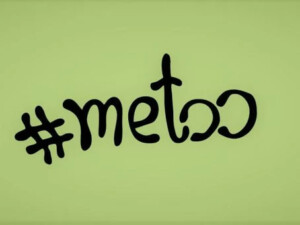Reporting mechanisms and policies…need to become real and alive in people’s day to day. We need to consider our human emotions, doubts and fears around how to do this and how to bring everyone into the conversation to co-create solutions.

Those I work with know I am passionate about sustainable approaches to building more inclusive workplaces. And like so many of you, I see “MeToo” as a movement, not a moment as its founder Tarana Burke noted.
As I process my own experiences I will share when the time is right, I ask all of us “what next?” After the initial reaction in the media and in organizations, many believe that after doing the minimum to comply, the issue is “resolved.” It is not.
After the initial ripple effect of “MeToo”, organizations I work with, many of which are charitable/NGOs or academic institutions, have made compliance-based changes as a result of new legislation mandating basic training and policies on sexual harassment. The province I am based in Quebec, Canada, has passed this type of legislation and I have provided mandated training. In Canada, all Global Affairs funded partners now must have publicly available codes of conduct covering sexual exploitation and abuse when signing a new contribution agreement for international development assistance. And InterAction has a CEO Pledge on Preventing Sexual Abuse, Exploitation and Harassment by and of NGO Staff, and subsequent project work. Internationally, the ILO Violence and Harassment Convention and Recommendation 2019 is the first international standard specifically addressing violence and harassment in the world of work. These are important developments.
That said, as a recovering anti-discrimination and harassment lawyer turned trainer/facilitator/consultant, I am committed to working in the “what next?” space so policies become real and alive in people’s day to day. We need to consider our human emotions, doubts and fears around how to do this and how to bring everyone into the conversation to co-create solutions. Managers and employees need the confidence and skills to have those tricky one on one conversations and not run away when someone comes to them with an issue. What do you do as an employee who wants to support? These are the questions I address in my work.
For those interested in research, studies that point to why compliance-based approaches alone will not lead to sustainable change. In a study in the Journal of Applied Behavioral Science (2001), men who underwent 30 minutes of sexual harassment programming were less likely than a control group to perceive or report sexual harassment, and more likely to blame the victim…Studies also show training was enhanced when people were asked to set goals for how they will change the workplace for the better, and write from the perspective of a colleague to build empathy, see this article.
In my work, I facilitate discussions on what “respect” and “disrespect” look and feel like. From there, we articulate concrete behaviours, and engage in practical empathy-based activities, including role play. I have seen more impacts from this than compliance based training I provided as a lawyer. I believe human-centred approaches like this are needed to take us from policy to daily life.
My call to action today is to take stock of your progress on sexual harassment prevention, and what you need to make that policy real. If you have a new policy and reporting mechanism and have received no reports, this means there is more to do.
See links below to help in your reflection:
Human Rights Watch – article on ILO Treaty
Medium article: Where Inclusion Meets Human Centered Design
Is Sexual Harassment Training Hopeless?
Tarana Burke Ted Talk: Me Too is a Movement not a Moment
A longer version of this article was previously published on Medium in October, 2019.


